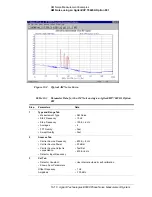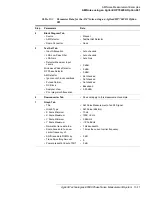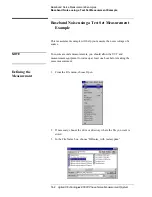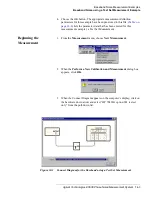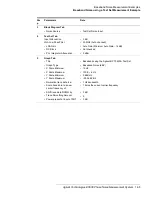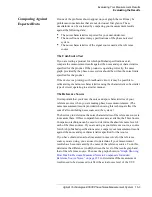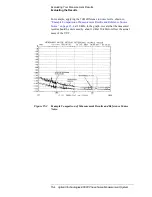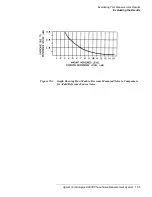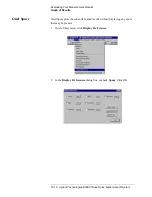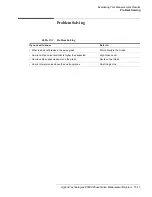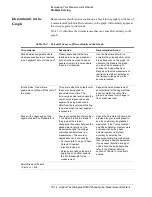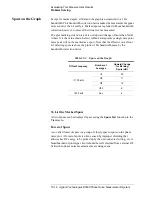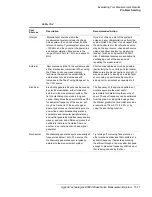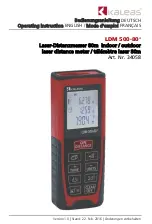
15-2
Agilent Technologies E5500 Phase Noise Measurement System
Evaluating Your Measurement Results
Evaluating the Results
Evaluating the Results
This section contains information that will help you evaluate the results of
your measurement. The purpose of the evaluation is to verify that the noise
graph accurately represents the noise characteristics of your unit-under-test
(UUT). At this point, you should have a graph showing the results of your
measurement. The following steps provide an overview of the evaluation
process.
•
Look for obvious problems on the graph such as discontinuity (breaks).
•
Compare the graph against known or expected data.
•
If necessary, gather additional data about the noise characteristics of the
UUT.
Figure 15-1
Noise Plot Showing Obvious Problems
Looking For Obvious
Problems
Some obvious problems on a graph are as follows:
•
Discontinuities or breaks in the graph.
•
A higher than expected noise level.
•
Spurs that you cannot account for.
•
Noise that exceeds the small angle criterion line (on a
L(f)
graph).
“Noise Plot Showing Obvious Problems” on page 15-2
provides a graphical
example of these problems. If one or more of these problems appear on your
graph, refer to the Problem Solving section for recommended actions.



